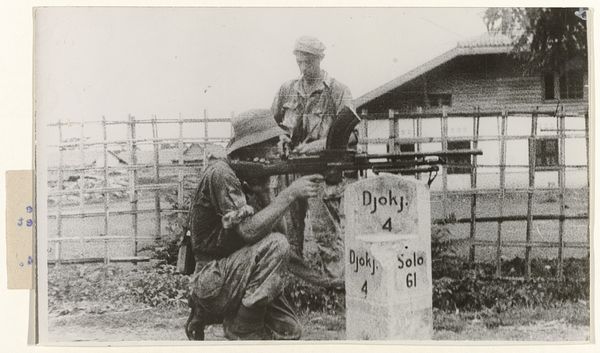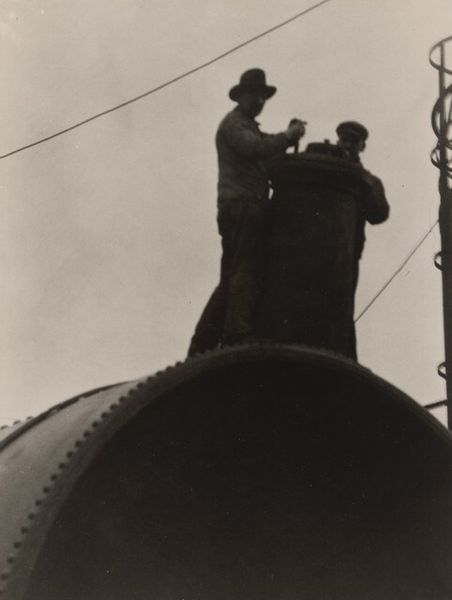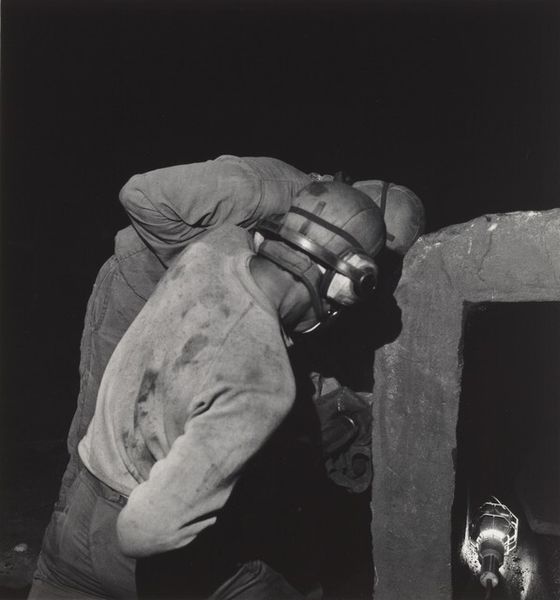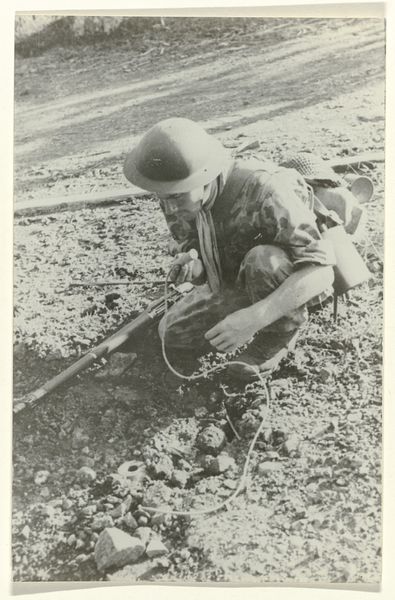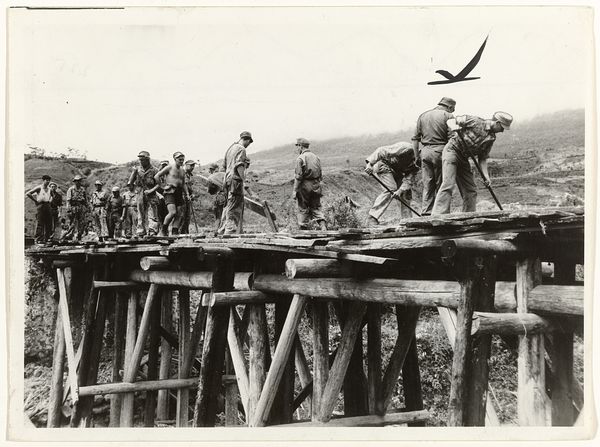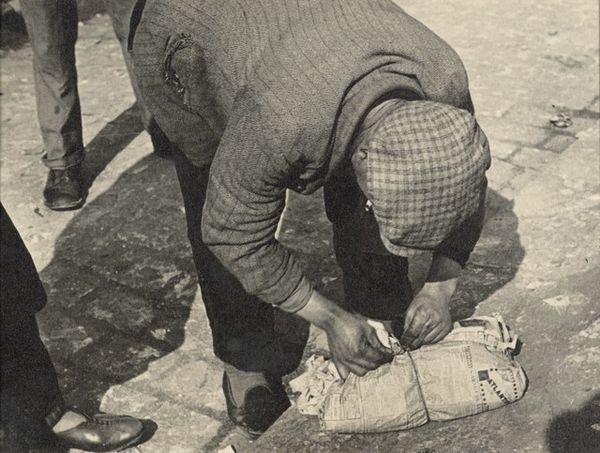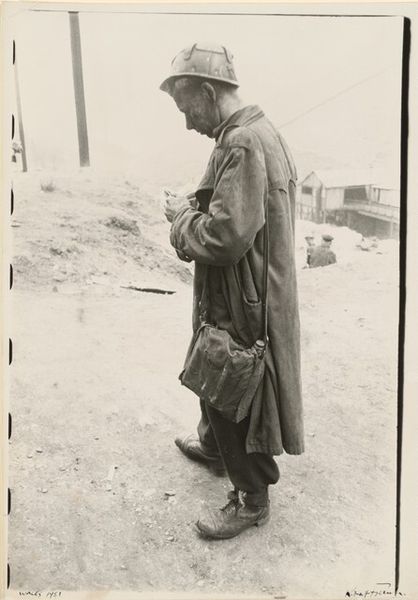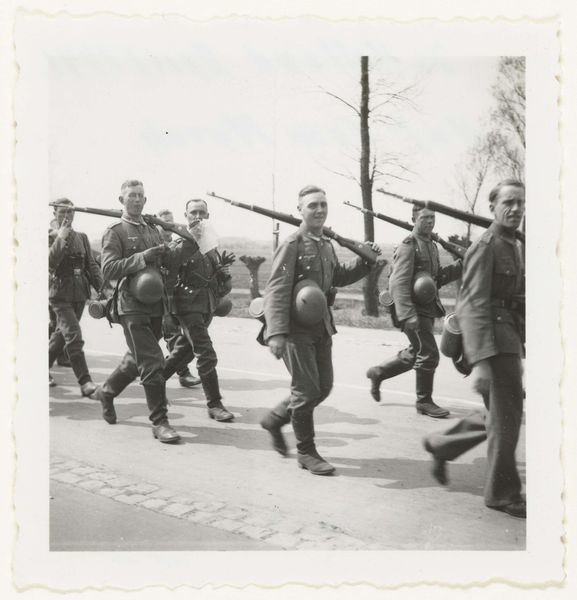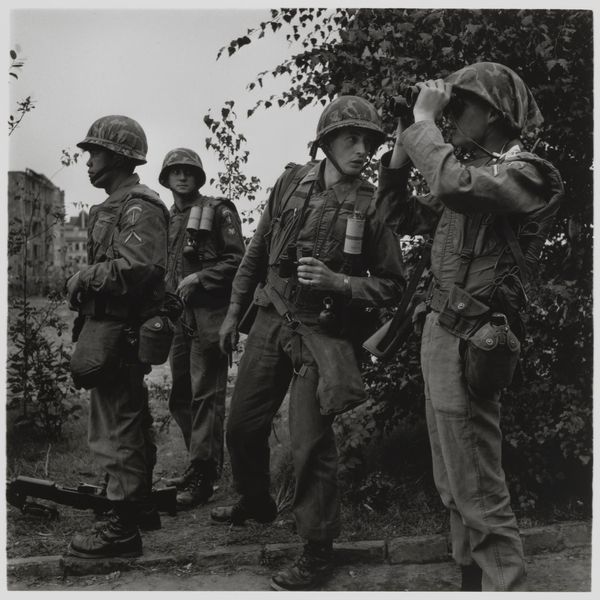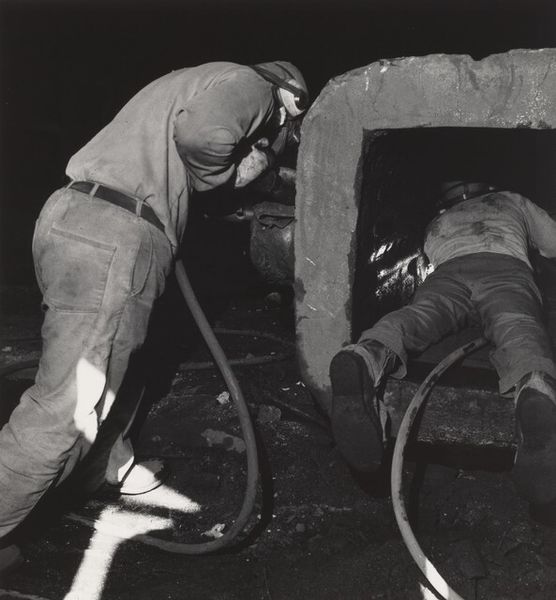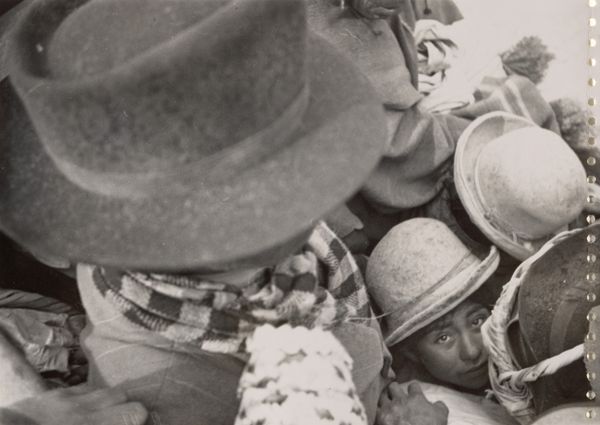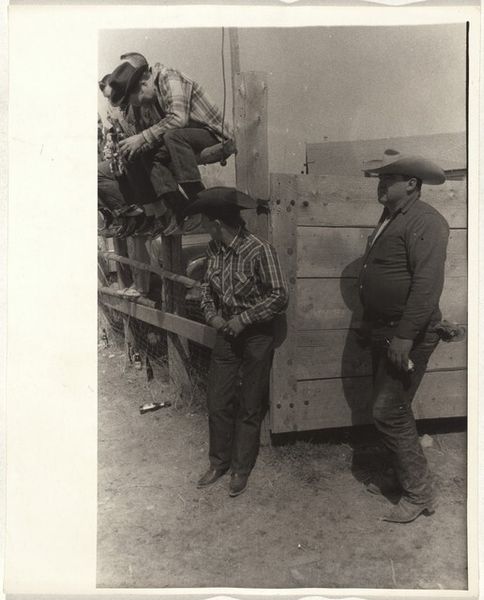
photography, gelatin-silver-print
#
portrait
#
outdoor photograph
#
street-photography
#
photography
#
historical photography
#
gelatin-silver-print
#
realism
Dimensions: image: 24.4 × 18 cm (9 5/8 × 7 1/16 in.) sheet: 25.6 × 20.6 cm (10 1/16 × 8 1/8 in.)
Copyright: National Gallery of Art: CC0 1.0
Curator: This image is titled "The Kiss of Life," a photograph taken by Rocco Morabito sometime between 1967. What strikes you first about it? Editor: Well, besides the sheer improbability of the scene, there’s a fragility to the moment that I find compelling, given the masculine context and what looks to be a perilous height. It looks so precarious! Curator: Indeed. The setting—atop a utility pole— infuses it with a heightened sense of drama, contrasting life and near-death. The figures become potent symbols of sacrifice and the everyday heroism inherent in these jobs. We learn from journalistic records that one worker received an electric shock, and his colleague administered mouth-to-mouth resuscitation. Editor: It is remarkable how Morabito captures this mundane moment and transforms it into an allegory. Knowing that the gelatin-silver print likely reached a wide audience through newspapers gives context to understanding its cultural impact. Did it play into societal attitudes of the time regarding first responders? Curator: Certainly. Consider how symbols resonate—the rescuer becomes almost Christ-like. The image reinforces prevalent values while subtly questioning the cost. What does this ideal heroism demand? What societal structures support these workers and how are they regarded publicly? Editor: I think too, about the implied exchange between working-class figures and the socio-political undertones— the vulnerability of laborers whose lives literally power progress, and how fleeting their well-being seems amidst it all. And yet, this life-saving moment took place during work hours with company resources. This adds another layer, no? Curator: That is insightful. Morabito’s ability to find beauty in unexpected places—elevated, yet within our reach—reminds us of the quiet heroism surrounding us. Ultimately, it captures something eternally human and selfless, transcending its specific time. Editor: Yes. While formally it is about capturing an event, it seems also an act of immortalizing a collective social narrative of the 1960s. Thanks for unraveling it!
Comments
No comments
Be the first to comment and join the conversation on the ultimate creative platform.
